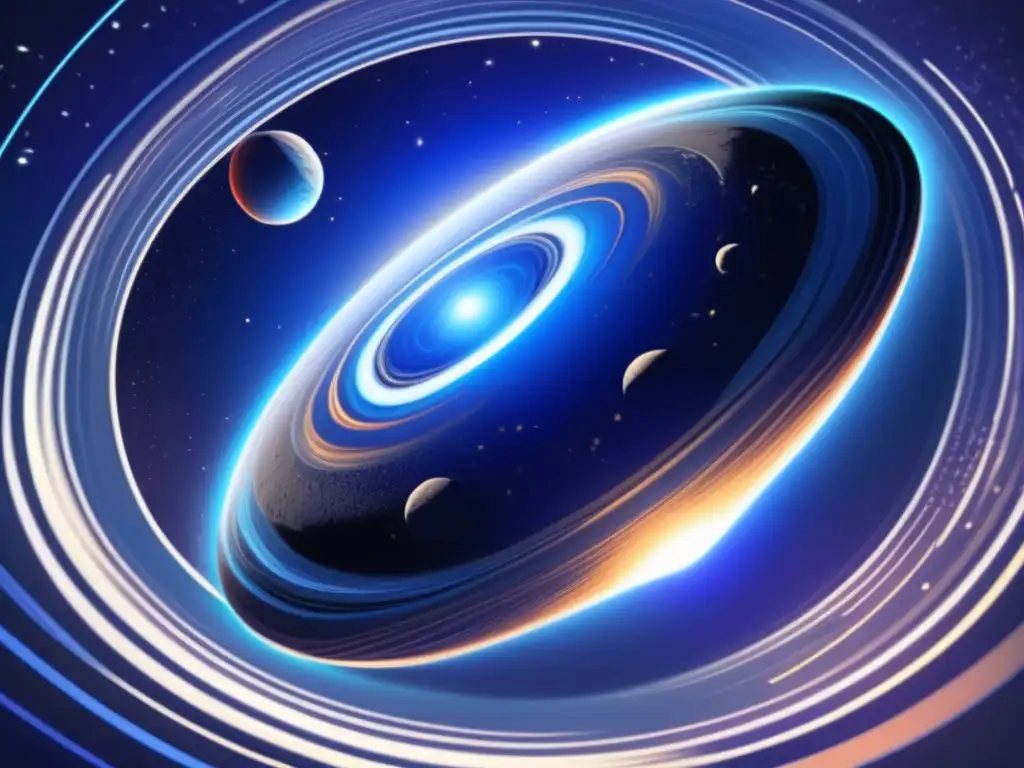Exploring The Asteroid Thule: From Myth To Space

Introduction
Welcome to Asteroid Realm! In this article, we will take a fascinating journey into the world of asteroids, focusing specifically on the asteroid Thule. With its rich mythology and historical significance, Thule offers a captivating exploration of our celestial neighbors. Join us as we delve into the history, cultural significance, and modern discoveries related to this enigmatic asteroid.
The Mythical Origins of Thule

The Ancient Greek Connection
In ancient Greek mythology, Thule was often associated with a distant northern land. It was believed to be an island located beyond the known borders of the world. The legendary explorer Pytheas claimed to have discovered this mystical land during his voyages in the 4th century BC. However, the exact location of Thule remains a subject of debate and speculation even today.
Norse Mythology and Thule
In Norse mythology, Thule also held great significance. It was considered the northernmost point in the world, a place where the sun never fully sets during the summer solstice. This concept resonated deeply with the Norse belief in the existence of other realms beyond Midgard, the realm of humans.
Thule in Modern Popular Culture
Thule continues to inspire artists, writers, and filmmakers. Its mythical origins have made it a popular topic in fantasy literature, where authors often reimagine Thule as an otherworldly realm populated by fantastical creatures and landscapes. These modern adaptations keep the spirit of Thule alive in popular culture.
The Astronomical Journey of Thule

Discovery and Classification
Thule was first discovered on October 23, 1929, by Danish astronomer Karl Reinmuth. It was initially classified as a main-belt asteroid, belonging to the Flora family. Thule's orbit is elliptical, taking it from approximately 2.3 astronomical units (AU) at its closest point to the sun, to about 3.3 AU at its farthest.
Physical Characteristics
Thule has an estimated diameter of around 20 kilometers. Its surface is believed to be composed of rocky material and may contain various minerals, including silicates and carbonaceous compounds. Scientists are particularly interested in studying Thule's composition, as it provides valuable insights into the early formation of the solar system.
Exploration and Future Missions
Thule hasn't been visited by any spacecraft missions yet. However, future missions, such as NASA's Lucy mission scheduled for launch in 2021, aim to explore asteroids like Thule in detail. These missions will provide us with a better understanding of Thule's composition, structure, and potential resources.
The Cultural Significance of Thule

Thule in Literature and Art
Thule inspires artistic creations across various mediums. From poems to paintings, Thule's mythology and mystical nature have fascinated artists throughout history. Notable authors like Edgar Allan Poe and H.P. Lovecraft drew inspiration from the enigma surrounding Thule, weaving its essence into their literary works.
Thule in Astronomy Education
Thule serves as an excellent educational tool for astronomy enthusiasts. Exploring the history and characteristics of Thule allows students and enthusiasts to delve into the fascinating world of asteroids. Its unique mythological background adds an exciting dimension to the study of celestial bodies.
Thule's Contribution to Scientific Research
Thule's study contributes to our understanding of the solar system's formation and evolution. By analyzing the asteroid's composition, scientists gain valuable insights into the building blocks of planets and the processes involved in their creation. Thule acts as a window into the past, revealing clues about the early stages of our cosmic neighborhood.
Frequently Asked Questions

-
What is the origin of the name Thule?
The name Thule has its roots in ancient Greek and Norse mythology. It has been associated with distant and mysterious lands beyond the known world.
-
Has Thule ever been visited by a spacecraft?
No, Thule hasn't been visited by any spacecraft missions yet. However, future missions like NASA's Lucy mission aim to explore asteroids like Thule in detail.
-
Why is the study of Thule important?
Studying Thule provides valuable insights into the formation and evolution of the solar system. Its composition and characteristics help scientists understand the processes involved in planet formation.
-
Are there any ongoing research projects focused on Thule?
While there are no specific ongoing research projects solely focused on Thule, it remains a subject of interest for astronomers studying asteroid compositions and the early solar system.
-
Can Thule ever pose a threat to Earth?
Thule's orbit doesn't intersect with Earth's orbit, making it highly unlikely to pose a threat to our planet.
Conclusion
Thule, with its mythical origins and scientific significance, allows us to explore the captivating world of asteroids. Its connection to ancient beliefs and modern discoveries bridges the gap between mythology and science. By studying Thule, we gain a deeper understanding of our cosmic neighborhood and our place within it. We encourage you to share your thoughts and continue exploring asteroids on Asteroid Realm. Thank you for joining us on this celestial journey!
Additional Resources

For additional resources and further exploration of asteroids, check out the following:
- NASA's Asteroids website
- International Astronomical Union - Asteroids
- NASA's Asteroid Watch website
- Asteroid Realm's Articles section
 Didymos And Dimorphos: A Binary Asteroid System Profile
Didymos And Dimorphos: A Binary Asteroid System Profile Discovering Dactyl: The First Known Asteroid Moon
Discovering Dactyl: The First Known Asteroid Moon Unraveling The Mysteries Of 1999 KW4: A Binary Asteroid
Unraveling The Mysteries Of 1999 KW4: A Binary AsteroidIf you want to discover more articles similar to Exploring The Asteroid Thule: From Myth To Space, you can visit the Asteroid Profiles category.
Leave a Reply

Articulos relacionados: